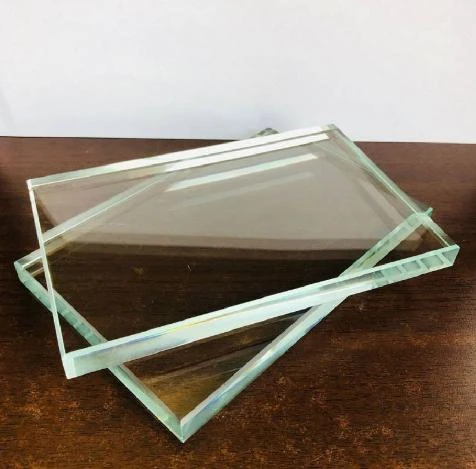The Aesthetic and Functional Appeal of Frosted Float Glass
Frosted float glass, often referred to simply as frosted glass, is a popular material in both architectural and interior design. It offers a unique combination of functionality and aesthetic appeal, making it a sought-after choice for various applications. This article explores the properties, manufacturing process, advantages, and uses of frosted float glass, highlighting its significance in modern design.
Properties and Characteristics
Frosted float glass is created by sandblasting or acid-etching standard float glass, which is a type of flat glass produced by floating molten glass on top of molten tin. This process results in a smooth, clear surface on one side and a textured, opaque surface on the other. The frosted surface diffuses light, allowing it to pass through while reducing glare and obscuring visibility. This property makes frosted glass an excellent choice for spaces where privacy is valued, such as bathrooms, offices, and conference rooms.
The aesthetic aspect of frosted glass is equally compelling. It possesses a soft, translucent quality that can enhance the overall look of a space. The gentle diffusion of light it provides can create a serene atmosphere, making it ideal for both residential and commercial environments. Its versatility also translates into various designs and patterns, allowing for customization to meet specific aesthetic preferences.
Manufacturing Process
The production of frosted float glass begins with high-quality float glass. The glass is then subjected to either sandblasting or acid etching. In sandblasting, fine sand particles are propelled at high velocities onto the glass surface, creating a textured finish. Conversely, acid etching involves the application of a chemical solution that etches the surface of the glass.
Both methods yield a durable and visually appealing frosted finish. Manufacturers can control the thickness and texture of the frosting, allowing for diverse designs that can cater to different tastes and styles. This flexibility in the manufacturing process enables architects and designers to use frosted glass in a wide array of applications.
Advantages of Frosted Float Glass
frosted float glass
One of the primary advantages of frosted float glass is its ability to provide privacy without sacrificing natural light. This characteristic makes it a preferred choice for spaces like bathrooms, office partitions, and conference rooms. The diffused light that passes through frosted glass creates a bright yet intimate setting, enhancing the functionality of the space.
Frosted glass is also known for its safety features. In the event of breakage, it shatters into small pieces rather than sharp shards, reducing the risk of injury. Moreover, its surface is easier to clean and maintain compared to clear glass, as it tends to hide fingerprints and smudges more effectively.
Another significant advantage is energy efficiency. Frosted glass can help regulate indoor temperatures by reducing the amount of sunlight that enters a space. This quality can lead to lower energy costs in heating and cooling, making it an environmentally friendly choice in construction and renovation projects.
Applications in Design
Frosted float glass has a wide range of applications in both residential and commercial settings. In homes, it is commonly used for bathroom doors, shower enclosures, and interior partitions. It grants a sense of openness while providing the necessary privacy, making it an ideal solution for modern living spaces.
In commercial settings, frosted glass is frequently utilized for office partitions and conference rooms, where privacy is essential. Many businesses opt for frosted glass doors and windows to maintain a level of professionalism while allowing natural light to filter through.
Architects and designers often integrate frosted float glass into facades to create visual interest while moderating sunlight exposure. It can also be used in decorative applications, such as glass railing systems, light fixtures, and art installations, adding a touch of elegance and sophistication.
Conclusion
Frosted float glass stands out as a versatile material in the world of design and architecture. Its ability to balance privacy, light diffusion, and aesthetic appeal makes it a popular choice for various applications. As design trends continue to evolve, frosted glass will undoubtedly remain a timeless option, enhancing spaces with both its functional benefits and visual charm.
 Afrikaans
Afrikaans  Albanian
Albanian  Amharic
Amharic  Arabic
Arabic  Armenian
Armenian  Azerbaijani
Azerbaijani  Basque
Basque  Belarusian
Belarusian  Bengali
Bengali  Bosnian
Bosnian  Bulgarian
Bulgarian  Catalan
Catalan  Cebuano
Cebuano  Corsican
Corsican  Croatian
Croatian  Czech
Czech  Danish
Danish  Dutch
Dutch  English
English  Esperanto
Esperanto  Estonian
Estonian  Finnish
Finnish  French
French  Frisian
Frisian  Galician
Galician  Georgian
Georgian  German
German  Greek
Greek  Gujarati
Gujarati  Haitian Creole
Haitian Creole  hausa
hausa  hawaiian
hawaiian  Hebrew
Hebrew  Hindi
Hindi  Miao
Miao  Hungarian
Hungarian  Icelandic
Icelandic  igbo
igbo  Indonesian
Indonesian  irish
irish  Italian
Italian  Japanese
Japanese  Javanese
Javanese  Kannada
Kannada  kazakh
kazakh  Khmer
Khmer  Rwandese
Rwandese  Korean
Korean  Kurdish
Kurdish  Kyrgyz
Kyrgyz  Lao
Lao  Latin
Latin  Latvian
Latvian  Lithuanian
Lithuanian  Luxembourgish
Luxembourgish  Macedonian
Macedonian  Malgashi
Malgashi  Malay
Malay  Malayalam
Malayalam  Maltese
Maltese  Maori
Maori  Marathi
Marathi  Mongolian
Mongolian  Myanmar
Myanmar  Nepali
Nepali  Norwegian
Norwegian  Norwegian
Norwegian  Occitan
Occitan  Pashto
Pashto  Persian
Persian  Polish
Polish  Portuguese
Portuguese  Punjabi
Punjabi  Romanian
Romanian  Russian
Russian  Samoan
Samoan  Scottish Gaelic
Scottish Gaelic  Serbian
Serbian  Sesotho
Sesotho  Shona
Shona  Sindhi
Sindhi  Sinhala
Sinhala  Slovak
Slovak  Slovenian
Slovenian  Somali
Somali  Spanish
Spanish  Sundanese
Sundanese  Swahili
Swahili  Swedish
Swedish  Tagalog
Tagalog  Tajik
Tajik  Tamil
Tamil  Tatar
Tatar  Telugu
Telugu  Thai
Thai  Turkish
Turkish  Turkmen
Turkmen  Ukrainian
Ukrainian  Urdu
Urdu  Uighur
Uighur  Uzbek
Uzbek  Vietnamese
Vietnamese  Welsh
Welsh  Bantu
Bantu  Yiddish
Yiddish  Yoruba
Yoruba  Zulu
Zulu 

